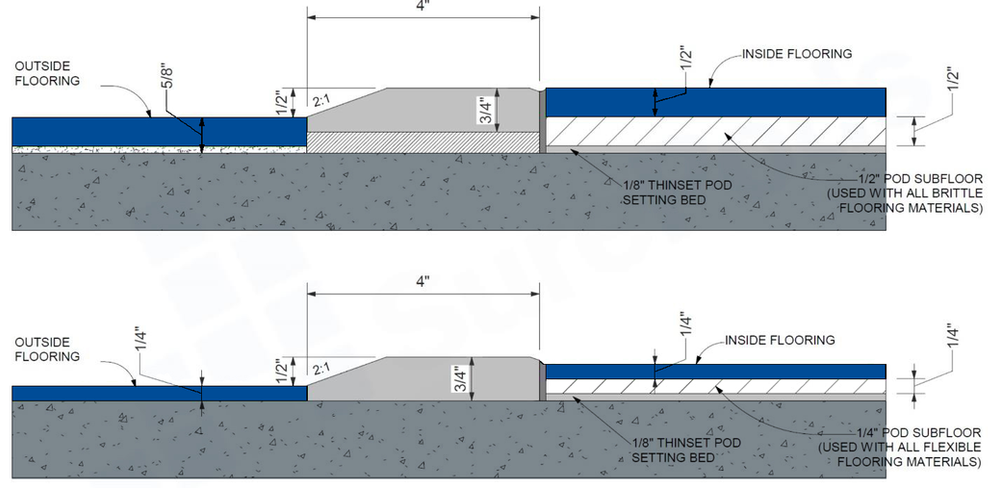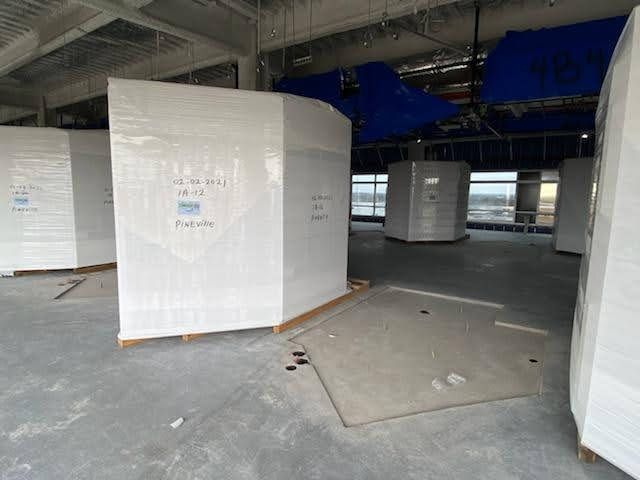Many preconceived notions and misconceptions prevent building professionals from making the leap to time- and labor-saving modular construction methods. Some envision a unit that’s only a step above a jobsite trailer, or a bulky, boxy structure that takes up valuable space. Thanks to advances in manufacturing methods, today’s modular bathroom pods are virtually indistinguishable from a site-built units.
In this week’s SurePods closeup, we’re debunking two common modular misconceptions:
Misconception #1: prefab bathrooms come with thick floor assemblies
Contrary to popular belief, modular bathrooms’ subfloors, like SurePods’, can be considerably thin. Rather than having to depress or modify the slab in anyway, crews can simply slide the prefabricated pod into place when they arrive at the construction site. Teams then only have to install a custom-engineered sloping floor threshold, as they would do with any on-site built bathroom. The threshold ensures that the transition between the flooring inside and outside of a prefab pod is ADA compliant.

While many residential and commercial applications don’t require slab depression, healthcare is the one exception. Sometimes, healthcare projects require the bathroom to be a wet room, where the floors are sloped to a drain in the center of the floor, and the entire bathroom works like a shower pan. This allows employees to completely hose out the room, utilizing the center drain. In these instances, healthcare contractors would need to plan for a slab depression to accommodate that slope within SurePods’ floor system. This is a key reason why Revit® BIM conflict analysis is a part of the pre-construction process with SurePods.

Misconception #2: prefab bathrooms require an increased vertical clearance
While you might guess that prefab, modular bathrooms require an increased vertical clearance space to maneuver into position and to place, the standard 104 in. (8’ 8” in clear) top of slab to bottom of ceiling height common in commercial project scenarios is adequate to accommodate bathroom pods. Once prefab bathroom pods are in place, the mechanical, electrical and plumbing (MEP) trades make the connections to the building’s mechanical systems, the exterior of the pods are sheetrocked and then floor thresholds are installed.
Regardless of project type, the key finding success with modular methods is to reach out to the manufacturer early. Early analysis with engineers and project teams is essential to ensure all parties understand how to properly integrate prefabrication into the architects’ and contractors’ vision. Problem-solving can occur before construction even begins, saving valuable time and resources.
If you think your project is a match for SurePods as we head into 2021, let’s talk. We have a checklist of technical issues we review with the project team based on our extensive experience to make projects seamless. To get started, contact us at [email protected].
Did you miss our previous article…
https://www.aboutbathroomdecor.com/?p=547